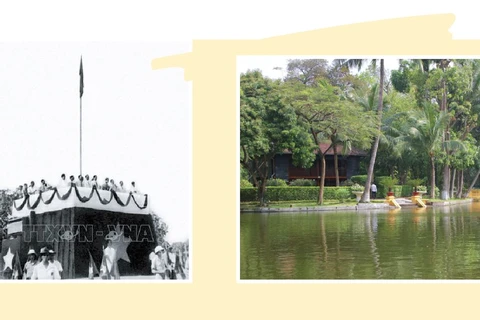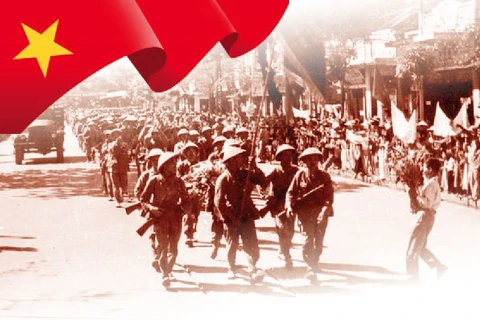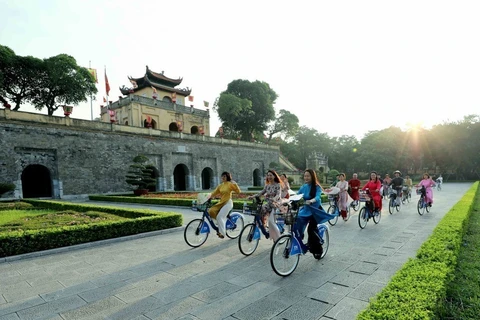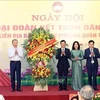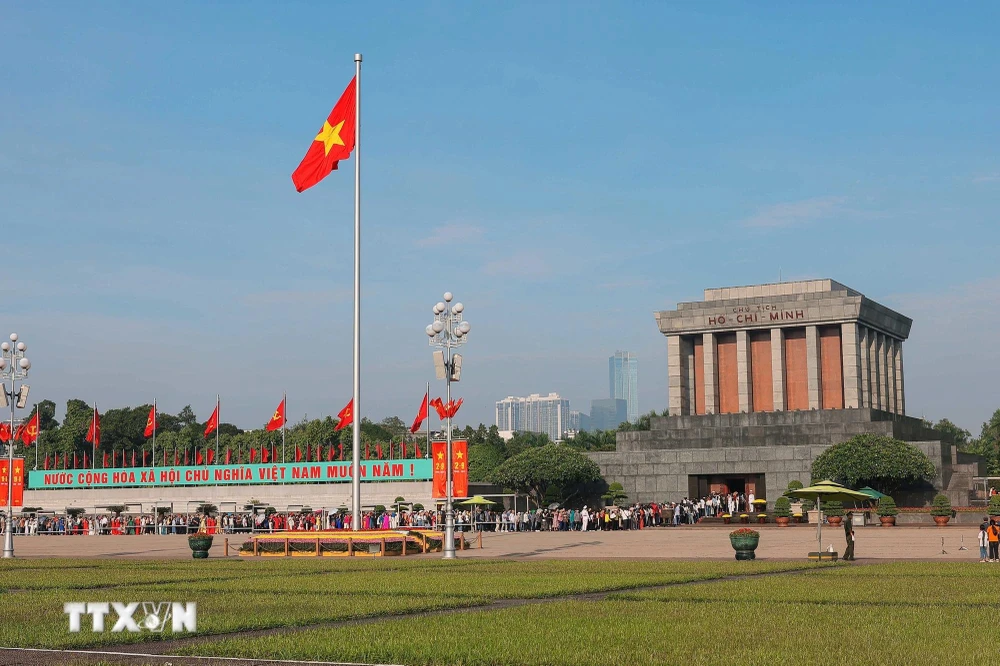
Hanoi (VNA) – Since its complete liberation on October 10, 1954, some 70 years ago, Hanoi has witnessed numerous changes, with many skycrapers built and large avenues stretching to its outskirts.
Today’s Hanoi boasts a modern stature but is deeply endowed with historical landmarks in thousands of ancient relic sites and architectural structures dating back hundreds of years.
Valuable architectural heritage treasure
The capital of Vietnam bears a distinctive identity compared to other modern cities around the world. Its both modern and ancient beauty is reflected through long-standing architectural strutures like the One-Pillar Pagoda, the Ho Chi Minh Mausoleum, Hoan Kiem Lake, the Temple of Literature, the Imperial Citadel of Thang Long, the Hanoi Opera House, and Long Bien Bridge.

A large number of structures built during the French colonial era are still preserved to today.
Among them, the Long Bien Bridge, dubbed the “horizontal Eiffel Tower”, was built by France and completed in 1902. It used to be the only iron bridge spanning the Red River.
As soon as the last French soldiers withdrew from Hanoi through this bridge on October 9, 1954, the entire city seemed to brighten up with colourful flags, flowers, and banners reading “Long live Ho Chi Minh!” or “Bravo! The victorious army returns!”

While the Long Bien Bridge saw the withdrawal of the French army, one day later, the Hanoi Flag Tower witnessed the flag hoisting ceremony of the victorious military corps of Vietnam.
The Hanoi Flag Tower was constructed from 1805 to 1812, in the same era with the Hanoi Ancient Citadel – under the reign of the Nguyen Dynasty. When the French colonialists destroyed the citadel, they also planned to demolish the tower, but luckily this structure remains today.

In addition, there are more than 1,260 villas built before 1954, under the French colonial rule, across the city. Particularly, they include many Indochinese-style villas designed by Vietnamese architects, according to the municipal Department of Construction.
These villas form an important part of the enormous and valuable architectural heritage treasure of Hanoi. The majority of them cover large areas and are situated at prime locations in inner-city districts such as Ba Dinh, Hoan Kiem, Hai Ba Trung, Tay Ho, and Dong Da.

Besides, the Old Quarter with many ancient streets featuring the French architectural style also adds to the romance locals and visitors could find in Hanoi at present.
Preserving architectural heritage
Talking to VietnamPlus, architect Dr. Dao Ngoc Nghiem, Vice Chairman of the Vietnam Urban Planning and Development Association, stressed that over the last 70 years, Hanoi has been rising up and gaining an urban appearance commensurate with its stature as a capital city.
In the recent past, the municipal Party Committee’s Steering Board for Programme No. 03-CTr/TU on urban landscape improvement and urban development for the 2021 - 2025 period has earmarked resources for preserving and promoting architectural values of outstanding, historical, and cultural structures such as the Thang Long Imperial Citadel, the Vietnam Military History Museum, the Hanoi Flag Tower, Long Bien Bridge, and among others.

The board said the programme’s results obtained so far have substantially contributed to urban landscape improvement and urban development, providing a stepping stone for the city to develop fast and sutainable towards a green, smart, and modern city.

Nghiem said that in the time ahead, Hanoi will pay more attention to rehabilitating the distinctive characteristics of the streets bearing the French architectural style.
Apart from valuable architectural structures, it will also step up the preservation and restoration of and urban space axes such as the Trang Tien - Opera House cultural axis, the Ngo Quyen financial - banking axis, and the Hanoi Station trade - services axis to capitalise on heritage values and economic development potential.

Additionally, the revised Law on the Capital and large master plans of the city are also expected to create a favourable legal framework for historical values and important architectural structures of Hanoi. Other areas will be invested and upgraded towards modernity, he added./.
